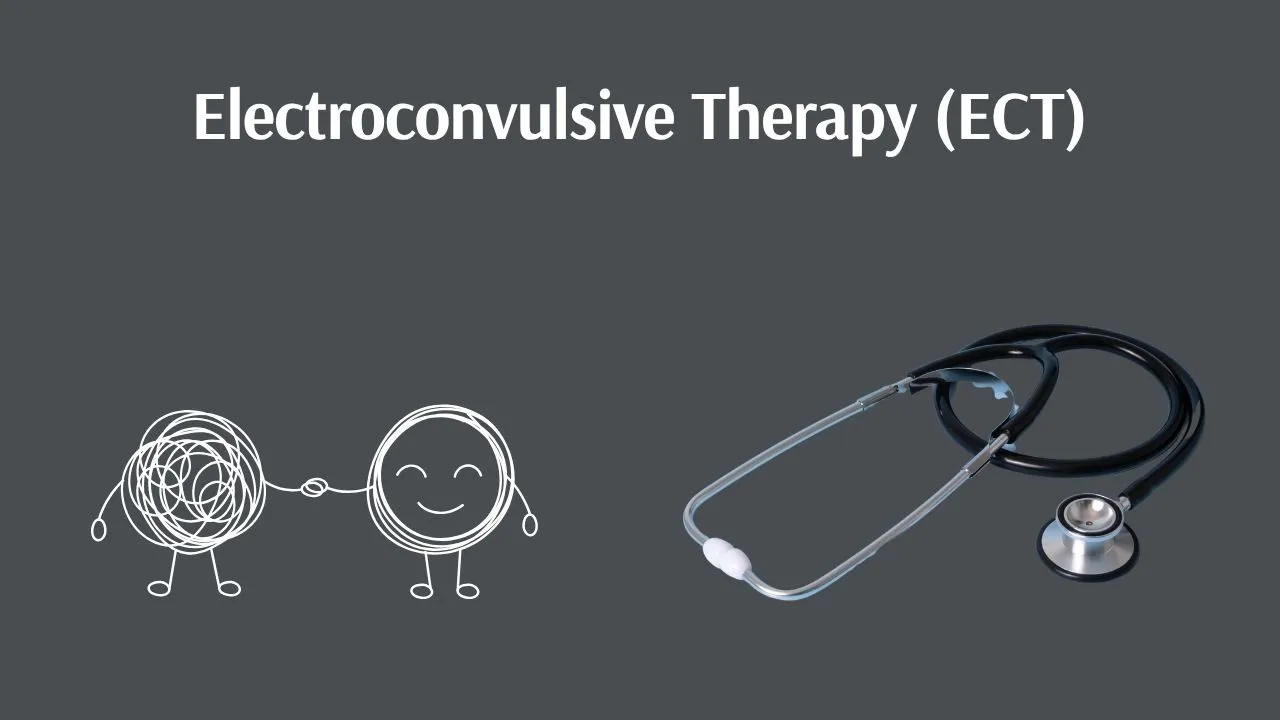Electroconvulsive Therapy (ECT)
What is Electroconvulsive Therapy ECT?
Electroconvulsive Therapy is a medical treatment primarily used for patients with severe mental health conditions, such as major depressive disorder, bipolar disorder, and certain cases of schizophrenia, especially when other treatments have not been effective.
Often referred to as electric shock therapy, it involves the controlled application of electrical currents to the brain to intentionally trigger a brief, carefully monitored seizure.
Understanding ECT Therapy
ECT procedures are conducted under general anesthetic to ensure patient comfort and safety. The induced seizure is believed to cause changes in brain chemistry that can quickly alleviate symptoms of certain mental illnesses.
Despite common misconceptions, modern ECT therapy is a highly regulated and safe procedure. It is performed with precision by trained healthcare professionals, and has been shown to provide rapid relief when traditional therapies fail.
Common Myths
Electroconvulsive Therapy has long been surrounded by misconceptions and stigma, much of which stems from outdated portrayals in the media and movies such as the 1975 classic “One Flew Over The Cuckoo’s Nest“ starring Jack Nicholson.
One common myth is that it is a painful or traumatic experience. In reality, it is performed under general anesthesia, so patients do not feel pain during the procedure.

It Causes Memory Loss and Brain Damage.
Another widespread misunderstanding is that ECT causes permanent memory loss or brain damage. While some patients may experience short-term memory gaps surrounding the treatment sessions, these effects are generally temporary and improve over time, with no evidence of long-lasting brain injury.
It is often mistakenly viewed as a last-resort treatment for severe mental illness; however, it is a carefully controlled and highly effective therapy frequently recommended when other treatments have not provided sufficient relief.
Understanding the facts helps reduce unnecessary fears and allows patients and families to make informed decisions about this valuable therapeutic option.
Benefits of Electroconvulsive Therapy
It has proven to be a highly effective treatment option for certain mental health conditions, especially when other treatments have not provided sufficient relief.
One of the primary benefits is its rapid onset action. Unlike many antidepressant medications that can take weeks to show effects, treatments often produce significant improvement in mood and symptoms within just a few sessions.
What Does It Treat?
It is a particularly valuable treatment for people experiencing severe depression, suicidal thoughts, or catatonia, where timely intervention is crucial. It has been shown to be effective in treating a variety of psychiatric disorders, including:
Important Considerations
How It Works
It works by inducing controlled seizures under medical supervision, which can reset brain chemistry and improve neural connectivity, leading to symptom relief. The therapy is considered safe when performed by trained professionals, with modern techniques minimizing side effects and discomfort.
Another notable advantage is that it can be a life-saving procedure for patients who do not respond to medications or those who cannot tolerate side effects from pharmaceutical treatments. It also offers an alternative for pregnant women who may need to avoid certain medications for fetal safety.
ECT provides a valuable option in the psychiatric toolkit, helping many patients achieve improved quality of life and renewed hope.
What to Expect When having Treatments
Undergoing Electroconvulsive Therapy may feel overwhelming at first, but knowing what to expect can help ease any anxiety. Before each session, you will undergo a thorough medical evaluation to ensure you are a suitable candidate for the treatment.
On the day of the procedure, you’ll be given a general anesthetic along with a muscle relaxant to keep you comfortable and prevent injury during the induced seizure.
Once you are asleep, the medical team will apply electrodes to your scalp and deliver a controlled electric current to trigger a brief, carefully monitored seizure. Although this may sound intense, the entire treatment usually lasts only a few minutes.
Recovery
After the procedure, you’ll be moved to a recovery area where the medical staff will monitor you until the anesthetic wears off. Some common side effects include confusion or memory gaps immediately following treatment, but these often improve with time.
Most patients undergo a series of sessions, typically spaced over several weeks, with your healthcare provider tailoring the schedule to your needs.
Understanding the process and maintaining open communication with your care team can help you navigate treatments with confidence and peace of mind.


